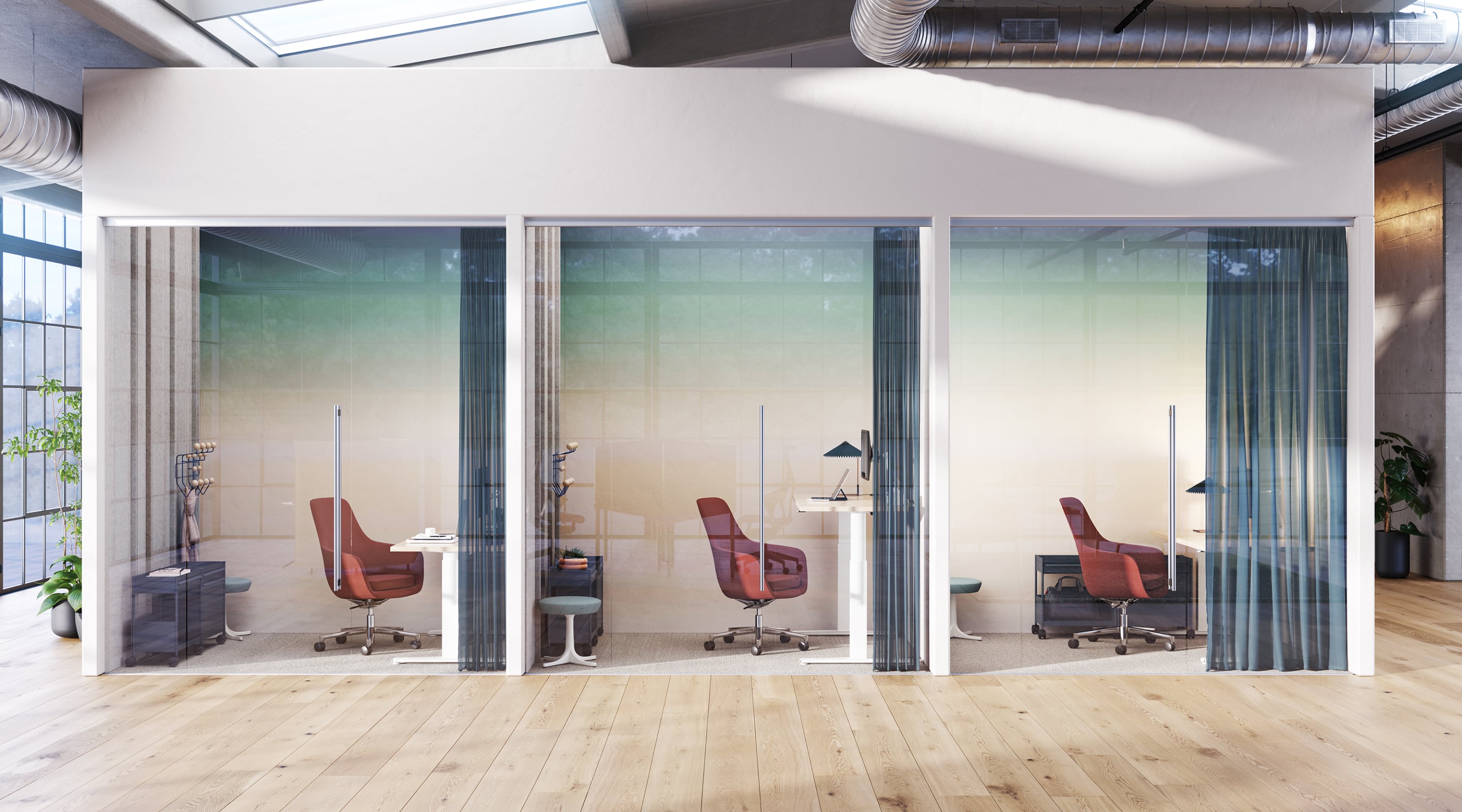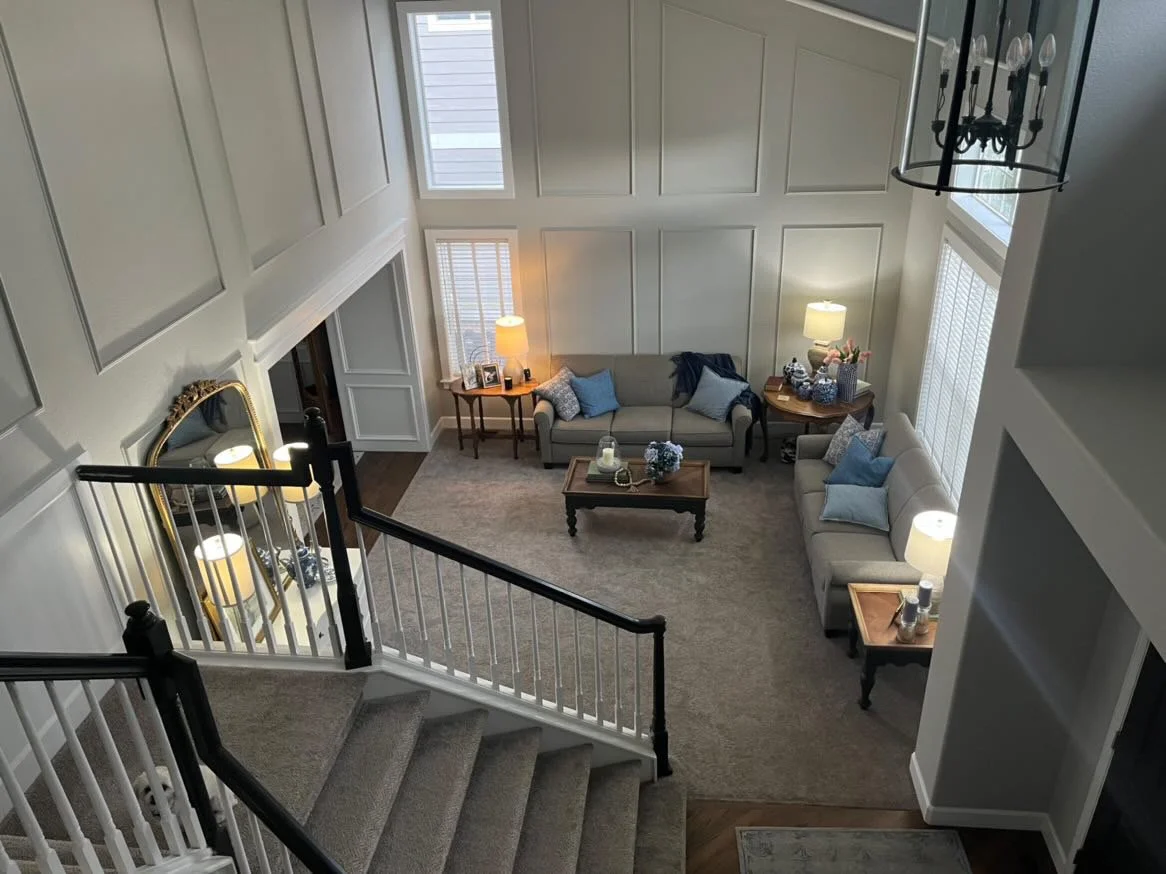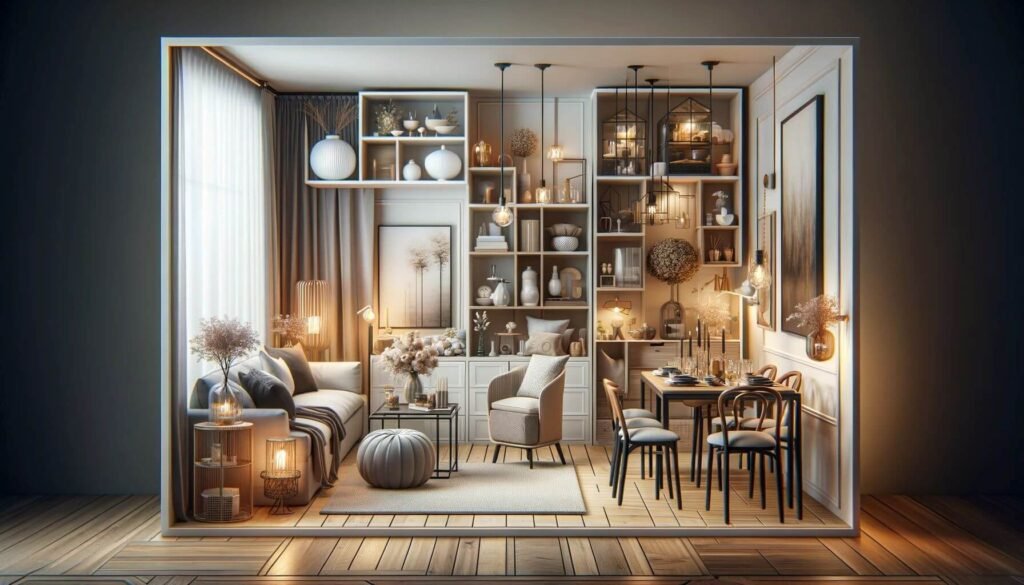As an Amazon Associate I earn from qualifying purchases.
Creating a secondary furniture grouping can add extra functionality and style to your space. Wondering what to place in this setup?
This blog will guide you through some practical and stylish options. Secondary furniture groupings serve as additional areas for seating, storage, or display. They can make a room feel more inviting and organized. Whether you have a spacious living room or a cozy nook, secondary groupings can enhance your home.
Items like accent chairs, small tables, or even shelves can fit perfectly into these areas. They add personality and utility without overwhelming the main furniture setup. Let’s explore what items might be ideal for your secondary furniture grouping.

Credit: www.hermanmiller.com
Introduction To Secondary Furniture Grouping
Secondary furniture groupings can include items like side tables, floor lamps, and small bookcases. These pieces complement the main furniture and enhance the room’s functionality.
In any well-designed living space, furniture arrangement is key. Primary furniture grouping usually includes the main seating and tables. But what about secondary furniture grouping? This concept can elevate your room’s functionality and style. It involves arranging additional furniture pieces in a way that complements the primary setup. Secondary furniture grouping adds layers and depth to your space. These arrangements can serve various purposes, from creating cozy reading nooks to functional workspaces. Understanding its purpose and benefits can help you make the most of your living area.Purpose And Benefits
Secondary furniture grouping has several advantages. It enhances the flow of the room, providing multiple functional areas. This type of arrangement can make a room feel more inviting and versatile. You can use it to fill empty spaces or corners that might otherwise go unnoticed. It also offers flexibility. You can rearrange these pieces easily, adapting to different needs and occasions. Secondary groupings can serve specific purposes such as reading, working, or socializing in smaller groups.Common Misconceptions
Many people think secondary furniture grouping is unnecessary. This is a misconception. In reality, it can make a big difference in the room’s usability. Another common myth is that it requires extra space. This is not true. You can create effective secondary groupings even in smaller rooms. Some also believe that secondary furniture must match the primary group exactly. While coordination is nice, it is not a strict rule. Mixing different styles can add character and interest to your space. “`
Credit: www.ballarddesigns.com
Choosing The Right Space
Choosing the right space for a secondary furniture grouping can enhance your room’s functionality and aesthetics. To make the most of this arrangement, you need to assess the available space and identify focal points within your room. These steps will ensure that your secondary furniture grouping complements the primary setup and adds value to the overall design.
Assessing Available Space
Start by measuring the area where you want to place the secondary furniture grouping. Ensure there is enough room to move around comfortably. Take note of any architectural features like windows, doors, and built-in elements. These can affect where you place your furniture.
Consider the traffic flow in the room. You don’t want the new arrangement to block pathways or create bottlenecks. Use painter’s tape to outline potential furniture placements. This gives you a visual guide and helps prevent overcrowding.
Identifying Focal Points
Identify the existing focal points in the room. This could be a fireplace, a large window, or a piece of artwork. Your secondary furniture grouping should enhance, not compete with, these focal points.
Think about creating new focal points. A cozy reading nook with a comfortable chair and a small bookshelf can become a new area of interest. Use lighting to highlight these areas. Floor lamps or table lamps can draw attention and create ambiance.
Consider the room’s function. A secondary seating area in a living room might focus on conversation. In a bedroom, it could be a place to relax. Align the furniture arrangement with the room’s primary use.
Seating Arrangements
Creating a secondary furniture grouping in your living space can enhance functionality and style. Focusing on seating arrangements within this grouping offers comfort and versatility. Whether it’s for reading, chatting, or relaxing, the right seating setup can make all the difference.
Types Of Seating
Consider various seating options to create a cozy and inviting space. Armchairs provide individual comfort and can be easily moved. Ottomans offer flexible seating and double as footrests. Loveseats are perfect for small spaces, offering room for two.
Benches add a unique touch and can seat multiple people. Bean bags are fun and casual, great for informal settings. Accent chairs can add style and serve as extra seating when needed.
Optimal Placement
Think about the flow of the room when placing your seating. Arrange seats to encourage conversation. Place chairs and loveseats facing each other or in a semi-circle. This setup fosters interaction and makes the space feel inviting.
Use ottomans and benches to fill gaps or create pathways. Position them where they can be easily accessed but do not obstruct movement. Place accent chairs in corners or near windows for cozy reading spots.
Ensure that there is enough space between seats for comfortable movement. Avoid overcrowding, which can make the space feel cramped. Proper placement enhances both functionality and aesthetics.
Incorporating Functional Furniture
Incorporating functional furniture into a secondary furniture grouping is essential for maximizing space and enhancing usability. This approach ensures that every piece serves more than one purpose, making your room more efficient and organized. Below, we explore some key elements to consider.
Storage Solutions
Storage solutions are vital for keeping your space tidy and clutter-free. Consider pieces like storage benches or ottomans that offer hidden compartments. These are perfect for storing blankets, books, or kids’ toys.
- Bookshelves: Ideal for displaying decor and organizing books.
- Storage Baskets: Great for holding small items and keeping them out of sight.
- Console Tables: Provide surface space and drawers for additional storage.
Using storage solutions effectively can make a significant difference in the overall feel of your room.
Multi-purpose Pieces
Multi-purpose pieces are designed to save space and add functionality. Consider furniture that can transform based on your needs. A sofa bed is perfect for guests, while a folding table can double as a desk or dining area.
- Convertible Sofas: Use as seating during the day and a bed at night.
- Nesting Tables: Stack together to save space, or separate when needed.
- Drop-leaf Tables: Expand for dining, or fold down for a smaller footprint.
These pieces help you make the most of your space without compromising on style or comfort.
Enhancing With Decorative Elements
Enhancing with decorative elements adds character and warmth to any space. Secondary furniture groupings offer an excellent opportunity to introduce unique touches. Thoughtfully chosen decorative elements create a cohesive and inviting atmosphere.
Artwork And Wall Decor
Artwork and wall decor are essential in a secondary furniture grouping. These elements bring personality and interest to the space. Select pieces that reflect your style and the room’s theme. Hang framed art, prints, or photographs above furniture items. This draws the eye and creates a focal point. Mirrors also work well, adding depth and light to the area. Consider arranging a gallery wall for a dynamic display.
Plants And Greenery
Plants and greenery breathe life into any room. They are perfect for secondary furniture groupings. Use potted plants on side tables or shelves. Choose low-maintenance varieties like succulents or snake plants. Hanging planters add dimension and visual interest. Fresh flowers in a vase provide color and freshness. Greenery not only beautifies the space but also improves air quality.
Lighting Considerations
When setting up a secondary furniture grouping, lighting plays a crucial role. Proper lighting enhances the functionality and aesthetics of the space. It can make the area more inviting and comfortable. Below, we’ll discuss key considerations for both natural and artificial lighting.
Natural Light Utilization
Natural light is an excellent way to brighten a secondary furniture grouping. It creates a warm and inviting atmosphere. To maximize natural light, consider these tips:
- Position furniture near windows.
- Use light-colored, sheer curtains to allow more light in.
- Install mirrors to reflect natural light.
Mirrors can also make the space appear larger. Additionally, keep windows clean to ensure maximum light enters the room.
Artificial Lighting Options
Artificial lighting is essential, especially in areas with limited natural light. Various options can enhance your secondary furniture grouping:
| Type of Light | Best Use |
|---|---|
| Table Lamps | Provide focused light for reading or tasks. |
| Floor Lamps | Offer ambient light and can be moved as needed. |
| Wall Sconces | Save space and add decorative elements. |
| Ceiling Lights | Distribute light evenly across the room. |
Combining different types of artificial lighting can create a balanced and well-lit environment. Consider the activities that will take place in the secondary grouping. Choose lighting options that meet those needs.
Always select energy-efficient bulbs to save on electricity costs. LED bulbs are a great choice. They last longer and consume less energy.
Creating A Cozy Atmosphere
Creating a cozy atmosphere in a secondary furniture grouping can transform any space into a welcoming retreat. It’s all about layering textures, adding warmth, and incorporating personal touches that make a room feel inviting. Below are some essential elements to consider for creating that perfect cozy environment.
Rugs And Carpets
Rugs and carpets are fundamental in creating a cozy atmosphere. They add warmth and comfort underfoot, which is especially important in colder months. Choose rugs with soft textures and warm colors. Opt for materials like wool or shag for added comfort.
- Soft textures: Look for rugs made from wool or shag.
- Warm colors: Consider earth tones or rich, dark hues.
- Layering: Place smaller rugs on top of larger ones for depth.
Using rugs to define spaces within a room can also help in creating distinct areas for relaxation and socializing.
Throw Pillows And Blankets
Throw pillows and blankets add both style and comfort to any seating area. They are an easy way to introduce color, pattern, and texture. Choose a variety of pillows in different shapes and sizes for a more dynamic look.
- Color and pattern: Mix and match to add visual interest.
- Texture: Incorporate materials like velvet, knit, and faux fur.
- Comfort: Ensure they are soft and inviting to touch.
Blankets draped over the back of a sofa or chair invite guests to cozy up and relax. They can also serve as a quick way to add seasonal flair to your decor.
| Element | Purpose |
|---|---|
| Throw Pillows | Add comfort and style |
| Blankets | Provide warmth and texture |
Incorporating these elements into your secondary furniture grouping will make your space feel more inviting and comfortable.
Tech Integration
Tech integration in secondary furniture groupings can boost your living space’s functionality and comfort. Adding smart devices and entertainment systems not only enhances convenience but also elevates your home’s modern appeal. Let’s dive into the essentials of tech integration for your secondary furniture grouping.
Smart Devices
Smart devices can transform your secondary furniture grouping into a high-tech haven. Here are some must-have smart devices:
- Smart Speakers: Control your music, set reminders, and get weather updates.
- Smart Lights: Adjust the brightness and color to match your mood.
- Smart Thermostats: Maintain a comfortable temperature effortlessly.
Entertainment Systems
An entertainment system can be the centerpiece of your secondary furniture grouping. Consider these elements:
- Flat-Screen TV: A sleek TV that blends seamlessly with your decor.
- Soundbar: Enhance audio quality for a cinematic experience.
- Streaming Devices: Access your favorite shows and movies easily.
Integrating technology into secondary furniture groupings can make your home more enjoyable. From smart devices to entertainment systems, the options are endless. Create a space that’s both functional and stylish.
Personal Touches
Adding personal touches to a secondary furniture grouping can create a warm and inviting space. These touches reflect your personality and make the area feel unique. Below, we explore a few ways to personalize this space.
Family Photos
Family photos are a wonderful way to add a personal touch. They remind us of cherished memories and loved ones. Displaying these photos in various frames can create an interesting visual appeal.
Consider arranging the frames in a small gallery on a side table or a dedicated shelf. Mixing different frame styles and sizes adds depth and interest to the display.
Unique Collectibles
Unique collectibles can add character to any space. These items can range from vintage trinkets to souvenirs from travels. They tell a story and spark conversations.
Arrange collectibles on a stylish tray or in a decorative bowl. This keeps the display organized and prevents clutter. Grouping similar items together can also create a cohesive look.
| Item | Placement Idea |
|---|---|
| Vintage Cameras | On a bookshelf or side table |
| Travel Souvenirs | In a decorative bowl or on a tray |
| Antique Clocks | As a centerpiece on a coffee table |

Credit: carlaaston.com
Frequently Asked Questions
What Is Secondary Furniture Grouping?
A secondary furniture grouping is an arrangement of furniture pieces separate from the main seating area. It adds functionality and visual interest to a room.
What Items Can Be Included In Secondary Furniture Grouping?
Items in a secondary furniture grouping can include side tables, chairs, ottomans, and decorative pieces. These items enhance the room’s functionality.
Why Use Secondary Furniture Groupings?
Secondary furniture groupings create additional seating areas and improve room flow. They also add layers of style and comfort to your space.
How To Arrange A Secondary Furniture Grouping?
To arrange a secondary furniture grouping, consider the room’s layout and traffic flow. Ensure the arrangement complements the main seating area.
Conclusion
Secondary furniture groupings add functionality and charm to any space. Think bookshelves, side tables, or cozy chairs. These pieces create inviting, useful areas. They complement the main furniture. Careful selection ensures a cohesive look. Mix practical items with stylish accents.
This enhances both form and function. Remember, secondary groupings should reflect personal style. Choose items that serve your needs and fit your aesthetic. Thoughtful arrangements contribute to a welcoming home. Experiment with different pieces. Enjoy the process of creating a balanced, beautiful space.
As an Amazon Associate, I earn from qualifying purchases.


